The Cosby Show and Race: Yay or Nay?
The Cosby Show is a comedy TV series popular for its wholesomeness and relatable family situations. The series started airing in the US in 1984, a time when racism was on the rise. However, despite the surface portrayal of the series, which includes pure family driven plot lines, there are hints of conflicting ethnic patriotism. Seeing as The Cosby Show uses mise-en-scène to subtly introduce the African heritage and patriotism, I will argue against the common notion that scholar William Raspberry clearly states:
In the article “Cosby Show Helped Bring Americans Together” by William Raspberry in The Atlanta Journal and Constitution, the main argument is that despite the series being around an African American family, it made the top TV series in America. Raspberry, like other analyzers implies that the series did not take a stand against racism; instead it did not even mention the issue – again, a notion I will rebut through analyzing the following.
I will examine the link between mise-en-scène and ethnic patriotism. Mise-en-scéne, here, is defined as the visual elements found within the setting. The elements of mise-en-scène that will be looked at are: 1) Varnette Honeywood’s paintings 2) the posters in the son’s, Theo’s, room 3) the reoccurring presence of dark colored furniture against light colored furniture. Along with the mise-en-scéne elements, ethnic patriotism is also created through dialogue between characters.
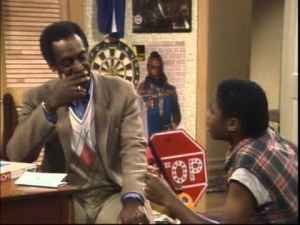
The episode that will be looked at in specific is The Cosby Show- Season 1 Episode 1: “Pilot: Theo’s Economic Lesson”. For the sake of understanding the content, a brief summary of this episode is crucial. In this episode, the father, Dr. Heathcliff Huxtable, returns home from work in the hospital. Once he arrives, he has household problems that he has to face. These problems consist of his son’s low grades and his daughter’s tasteless choice in dates. So, the conflicts in the episode are simple and appropriate for most families and do not include the aspect of race.
The mise-en-scène used in The Cosby Show implies a racial controversy radiated from the series. In the first episode, the Varnette Honeywood paintings are seen in the living room, the son’s room, and the hall. The shots are usually framed to show the paintings or at least a glimpse of them. The paintings aren’t only painted by a woman of African ethnicity, but also the paintings are of people of the same ethnicity. That being said, the constant décor of paintings from the same artists suggests an essence of patriotism. Honeywood’s paintings aren’t the only wall decors that are used. There are also posters in the son’s, Theo’s, room of African American athletes (basketball players and a famous boxer). The fact that the poster is hung on his wall signifies that they are people he looks up to. Since his role models are of the same ethnicity of himself, he may feel a sense of connection. That being said, it could be assumed that the African American viewers of the series also feel a sort of connection towards the show, explaining why it was a huge hit.

Another point about mise-en-scène is that a majority of the furniture is either a dark brown or off-white, contrasting the two colors. The whole house is actually furnished in this way. The house’s exterior is a dark brown color also whilst the neighbor’s house is white. The argument here is constructed through the reoccurrence of the contrast between the two colors. The choice of these two colors constantly near each other signifies that the two races (black and white) are different but are still alike, which is seen in the relatable situations presented in the episode. So, despite the fact that the series does not explicitly state its position in the controversy, the mise-en-scène very subtly creates a patriotic visual link between the characters and their roots.
The use of mise-en-scène was taken an extra step by media scholar, Christine Acham, in her analysis: “The Cosby Show – Representing Race”. Acham states that along with the posters in Theo’s room, there are framed pictures of Martin Luther King and Frederick Douglass, two African American historical figures. Also, jazz music often fills the household and African American musicians, such as Stevie Wonder, are usually implemented for guest roles. So, not only are there visual references to great African American figures but there are also references in dialogues. The characters refer back to African American writers like Richard Wright and James Baldwin. These references along with the visual representations of African American heritage are cleverly used to nudge an idea to the viewers, or at least motivate them to think about race and racism. These references also be seen as dual-actors: the episode also created a sense of ethnic pride. For the first time, in perhaps a long time, a series does not base its comedy and plot merely on the characters’ ethnicities. Instead, the ethnicities of the characters are just an element unrelated to the narrative – a refreshing change during the 1980s.
In The Cosby Show, the common notion that Cosby did not want to take a stance on racism and thus did not include it in the series is, put simply, incorrect. The subtle use of mise-en-scène that promotes the African American race is on its own a symbol of patriotism. This can be seen through the wall décor, décor color choices, placement, and the subtle dialogue references to African American figures. So, even though it was not shown explicitly, The Cosby Show indeed did have a stance on the issue of racism.
What do you think? Leave a comment.
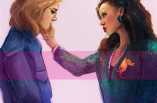
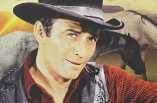
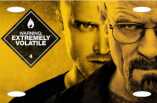


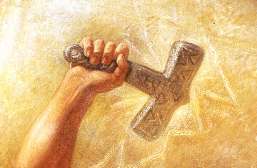
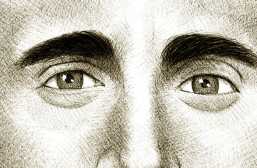

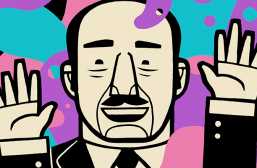
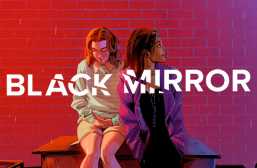

When the show wanted to make a point, often the point was just.. you know, there.
What I mostly remember about the show is the argument my father and grandmother had about it. My visiting grandmother said something about how the Huxtables didn’t quite seem “authentic” enough because they were a well-off black family in a nice house with nice clothes; my father lost patience with her.”What parents *wouldn’t* want to give their children a nice house and nice things??” It was terribly awkward.
I really liked the episode where Theo’s teacher comes over for dinner. Back in the day, it was a terrifying notion to think about–what if my most hated teacher came over and started palling around with my parents?
Times were much different from now, to when this show was being taped. Nonetheless, this show had it’s own way of showing how it felt about racism.
I like the subject itself. I honestly thought it was headed in another direction. It certainly can be expanded on. Cliff wears sweatshirts of Historically Black Colleges and once his father takes a more active role, music and musicians become a fluid subject.
One thing I did notice is that the poster you are referring to in Theo’s room is in fact of Mr. T., pop culture icon of the 80’s not a boxer.
Those are extremely interesting points. Are those points also found in the Pilot episode, or in a later one?
Thank you so much for the correction! I recognized him but could not pin point who he is exactly!
I can sleep peacefully now :’)
Mr. T played a boxer in Rocky III….and I believe was originally a bouncer, which is probably where this role was assigned to him.
I really liked the episodes about Cliff and Theo. The scene in the pilot between them is so incredibly memorable. I’ll never forget Theo saying he’s just going to be “Regular people”.
I always felt like this show did an excellent job of portraying what an actual marriage looks like, and, along with Roseanne, was one of the best on TV at it. In addition to actually getting right what conversations between married people actually sound like and consist of, I always loved that sense of lived-in-ness Claire and Cliff had, like they had this whole long history together that you’d get glimpses of every once in a while. That partnership was really the heart and soul of the show (again, like Roseanne). Long did the Cosbys own this category, that is until Friday Night Lights came along and set the all time record for realistic marriage depiction, which shall never be topped.
Agreed, I started reading your post and thought of FNL’s Coach and Tami.
Then you’ve got other couples like Walter and Skyler White or Tony and Carmela Soprano.
The Cosby Show’s depiction of race issues was usually indirect. In some ways, it was a proto-post-racial (take that!) sitcom, living in a world where it was more likely for the characters to be sexist than racist. You are right that it rarely addressed race directly, but a show that said “hey white people, you know we do talk about other things besides race and poverty all the time” was a pretty unique statement — the way homosexual characters are only now finally beginning to get story arcs that involve more than fighting homophobia and falling in love at a club. Its lasting impact to the racial discussion is that, like Lt. Uhura on Star Trek before it, it showed successful black people just living their lives without either being hip, angry, or jive. That is still unusual enough on television for it to be significant and it is that subtext that makes it an important show.
The Cosby Show definitely provided a sorely needed positive depiction of African-Americans on tv, but I barely remember there being any serious discussion about race on the show. I vaguely remember some Black History Month episode where there might have been a mention of slavery but…yeah, I dunno. Good show though.
Another thing the show often dealt with in an interesting way was gender. There was Elvin, who had all the wrong ideas about gender equality for no other apparent reason than he was kind of dumb. Then on the other hand, you have Kenny in the later seasons spouting off the sexist stuff he learned from his older brother, which was much more aggressively anti-feminist. Both of them got schooled by Clair, but it’s interesting that the writers managed to make them come from such different places in their ignorance.
What’s great about Kenny is that he’s a little kid. He barely understands what he’s saying, and because he’s a cute kid, can “get away with it.” The writers used Kenny to explore sexism in a great, useful, but humorous and not in your face way. Really intelligent decision for an 80sish sitcom.
I am not sure if I agree that the racial undertones were as purposeful as written by this article’s author. It doesn’t make sense that an African-American household would have anything different on their walls, in their children’s rooms, and as a choice for music, food, etc. Just like the 70’s Show had rock and roll playing, drug overtones, and hard and fast family values that were trying to be portrayed, the Cosby Show, I feel, didn’t push an agenda as much as just gave a look at that type of household (in most respects).
I certainly resonated with your point where you applauded the series for not basing its plot based on the Huxtable’s ethnicities. I’ve long associated the show with a quote from Martin Luther King Jr’s I Have A Dream speech: “I have a dream that my four little children will one day live in a nation where they will not be judged by the color of their skin but by the content of their character.” In Dr. King’s ideal nation (or at least my interpretation of it), “black people” and “white people” alike will simply become “people”. Yes, these people will continue to be black or white, but they will first and foremost simple be people. I believe The Cosby Show achieves this brilliantly: the Huxtables may be black, but they are, primarily, portrayed as a family. Not a black family, just a family. One would imagine that, in Dr. King were still with us, he would’ve been a fan of The Cosby Show.
I know I’ll probably come off as a self-important idiot by posting this comment, but it means a lot to me, so I’ll risk it:
The Cosby Show is why I’m not a racist.
I grew up watching TCS in syndication. I’d seen pretty much every episode around ten times by the time I hit high-school. I spent so much time with the Huxtable family in those developmental years that I assumed the way their family was portrayed was prototypical of all (real life) families. I also came from a loving, two-parent, stable family. So to me, it wasn’t even a “oh, this is what an average black family is like”, it was “this is just what all families are like”.I even remember being very surprised to learn, as I got closer to College, that racism was even still a thing that existed on a large scale. As far as I was aware(in my stupid sheltered child brain) racism was something that we realized was bad back when my parents were kids and so it mostly went away.
But by the time it became clear to me that racism was still a huge problem, I was old enough to have ingrained in my head(mostly by TCS) that we’re all the same. Black, white, whatever; we’re all people.
I’m not saying that I don’t have any prejudices as an adult; I’m not that naive(but I’m always working to better myself in that area). What I am saying is that: growing up on a diet of The Cosby Show had a major and positive impact on me as a person and I will be forever grateful for that.
I don’t remember The Cosby Show having episodes that were heavily influenced on race, so I can’t say that I totally agree but at the same time, I think it is a good perspective to take on the show and something that catches the eye. It did make me think while I was reading.
I agree that The Cosby Show took a stand on racism through subtle objects and dialogue throughout the scenes. I liked this article a lot; it made me re-look at The Cosby Show and it’s cultural importance.
The very fact that an educated black family was on prime time TV was a stand against racism. The show did not reinforce negative stereotypes, but instead offered a universal storyline about marriage, family, and adolescence, and so on. And by doing so, brilliantly allowed the black community to see that black is beautiful, smart, sassy, nerdy, loving, etc.
I agree with you that there definitely was an element of race in the house. I think there are a lot of other ways they show it that are much more obvious. I always enjoyed this show. Their problems were never based on racism and their solutions were always entertaining. I think most, if not all, representations of race in this show were encouraging, thoughtful, and celebratory.
This article is well written and was an admirable analysis article but I think it is grasping… I believe that a painting from an African American is shown does not give any suggestion of a stance of Racism, nor do posters of athletes. They are not hiding the fact the household is African American and because of that their household represents how the community may decide to decorate the house. If deciding to decorate your house with a member of the community you belong to signifies a stance on something then anyone with a Van Gogh painting must be an advocate for STDs. I just cant see the connection, but it can be made to be controversial.
I’ve been watching The Cosby Show for as long as I can remember, but never did I stop to think about its stance on racism because it was just as you wrote in the article, very subtle. Although I noticed some of the elements of the mise-en-scène ( the jazz music,art by Black artists, etc.) I never truly noticed them and their specific functions. During this time period, there were a lot of other television programs featuring Black families as your average, everyday unit, so I racism wasn’t brought up in such blatant ways like today (see Black-ish). The entirety of each episode could be used to actually showcase the family and its members’ various personalities, and I miss that. We rarely see any shows in this era crafted as well as these shows from the 90s, (Sister Sister, The Fresh Prince of Bel Air, etc.) but considering that everything is a cycle, perhaps we will soon have another “golden age” of Black television programming.